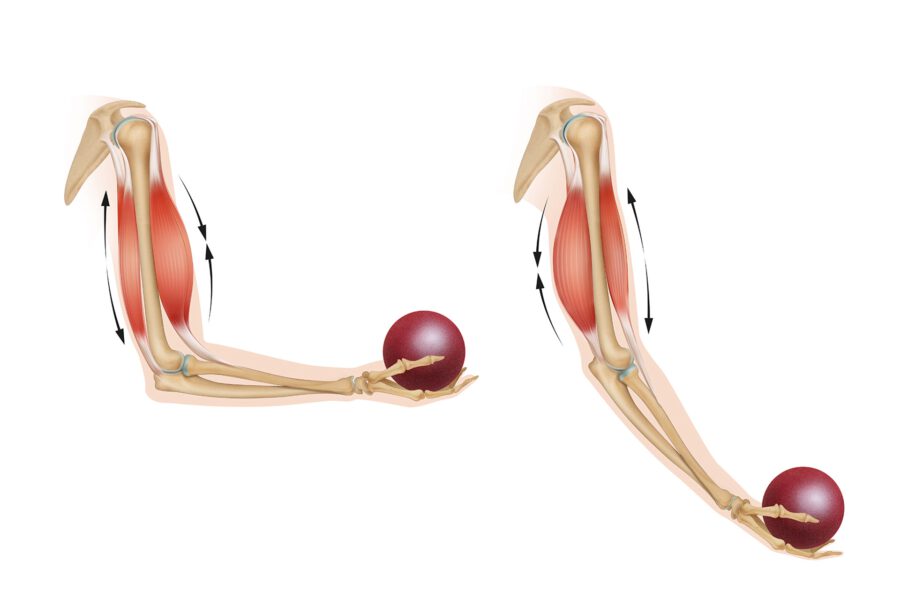Principles of Muscle Building: How to Get Bigger Muscles
Building muscle is the most common reason people go to the gym and pursue fitness. But achieving consistent muscle growth isn't as simple as it may seem. If it's easy, everybody would have their dream physique by now. But even worse, many people struggle to get results despite spending significant time in the gym, leading to frustrations and demotivation.
Sure, adding a considerable size and muscle mass is achievable, especially if you are a beginner due to newbie gains where you can rapidly accumulate muscle mass and strength during the first 6 months to 1 year of starting lifting. But you need to understand the basics of the muscle-building process to consistently progress in your fitness journey.
This article will take a deep dive into the principles of muscle building and how you can use them to optimize your health and fitness.
How much food you eat determines the amount of muscles you gain.
It all starts with nutrition. Gaining muscles requires you to eat more food to have more energy, and being in a calorie surplus will definitely help you build more muscles fast, but it’s not necessary. Calorie surplus means the calories you take should exceed the calories you burn through daily activity and metabolic processes.
Prioritizing your eating habits and getting enough nutrients can help you gain muscles fast. You need about 250-500 calories per day above your maintenance level to provide enough fuel to support muscle growth and to grow bigger more effectively.
Aside from helping you gain muscles, the extra calories you eat will cause you to gain more weight and a little more fat. This is because your extra energy is stored as fat for later use. But, you can always build muscles while losing fat through body recomposition.
Think of protein as raw materials that reconstruct your muscle tissues after a grueling workout. Adding sufficient protein to your diet and maintaining a calorie surplus is the key to building more muscles.
According to studies, you need about 0.6g to 1.0g of protein per pound of your total body weight to ensure muscle growth. However, these can be based on factors like age, training intensity, and metabolism.
The protein Leucine found in foods like whey protein and eggs, has been shown to directly stimulate muscle protein synthesis– the process of producing new muscle proteins and repairing muscle fibers.
By working out frequently, you provide a continuous stimulus for your muscles to grow. This is because you expose them to metabolic stress and the challenges required for muscles to adapt and become stronger and bigger.
Train each muscle group 2-3 times per week to maximize muscle gain. Remember to allow your muscles to rest and recover. Training them too frequently can increase the risk of overuse injuries and suboptimal recovery.
Remember, resting is part of the muscle-building process. Having at least 24 hours of rest between each workout day for each muscle is ideal for optimizing recovery and muscle growth.
Range of motion refers to the distance a joint can move from point A to point B. A full range of motion during workouts is best for building muscles and strength. This means moving a weight or resistance throughout the available range of a movement.
When muscles are stretched while under load, more micro damage occurs within the muscle fibers, and muscle-building hormones are released to rebuild and repair damaged muscle tissues, making your muscles bigger and stronger.
Ensuring the quality of your movement while using a full range of motion is more challenging. It is best to lower the weight you're using and focus on completing your sets while ensuring proper lifting posture and not compromising the quality of your exercise.
You can add more muscle mass when you prioritize compound movements. This means that multiple joints are moving to accomplish an exercise. Studies have shown that your growth hormone and testosterone levels increase when performing compound exercises, further enhancing your muscle growth.
Here are some of the most common compound exercises for each body region:
| Body region | Exercises |
| Shoulders | Push press, dumbbell overhead press, high pull |
| Chest | Bench press, incline press, dips, dumbbell bench press |
| Back | Pull-ups, chin-ups, barbell rows, t-bar rows |
| Hips | Deadlifts, Romanian deadlifts |
| Legs | Bulgarian split squats, back squats, leg press, front squats |
Prioritize these big compound exercises in your training and add accessory exercises to complete your workout. Heavier weights produce higher neural activation and recruitment of motor units.
For a muscle to continuously experience hypertrophy, an incremental increase in workload must be applied to challenge the body's current capacity to overcome load or resistance.
To build muscles effectively, you must gradually make your workouts harder and more challenging. Increasing resistance, altering exercise tempo, modifying exercise complexity, and manipulating other variables like rest intervals are excellent ways to build muscles continuously.
When your muscles are exposed to increased stress beyond their accustomed level, it triggers cellular responses, resulting in muscle repair and growth. That's why progressive overload is essential, as it provides a continuous cycle of muscle breakdown - recovery - and growth.
Aside from nutrition and regular exercise, the key to building muscles is focusing on things you can control.
The most straightforward method to implement progressive overload is by increasing the weight lifted. Ideally, you should increase the weight you are lifting every week or two.
A common recommendation is a 5 to 10-pound increase for lower body exercises like squats and deadlifts and a 2.5 to 5-pound increase for upper body exercises like bench press and overhead press each week.
This refers to the total number of sets and repetitions. An increase in volume also contributes to a higher workload. The key is to find out your baseline volume where you can complete your workouts without compromising form or experiencing excessive fatigue.
You can further challenge your muscles by adding an additional 1 set for each exercise if you are accustomed to your workout routine. Compound exercises usually require more volume than isolation exercises to maximize their effect.
Here’s a men’s plan you should try:
And for women:
While allowing muscles time to recover is crucial, increasing the frequency of targeted workouts can also facilitate progressive overload. For more experienced lifters, 4-6 training sessions per week targeting different muscle groups can be more beneficial in breaking plateau.
More frequent training sessions can lead to better motor learning and technique improvement, especially if you are a beginner.
Altering the speed of the repetitions or the rest intervals impacts the workout's intensity. High-intensity workouts can generate more mechanical tension in muscle fibers and further increase the release of anabolic hormones. The speed and duration of your exercises can also target different energy systems of your body.
If you are a beginner, focus on lifting tempo of 1-2 seconds contraction and 1-2 seconds moving the weight lower. A moderate intensity of 50-70% of 1RM is also a good start.
For more advanced lifters, changing your lifting tempo and using advanced strength training strategies could be best for building more muscles. An intensity of 75% to 85% of 1RM will ensure hypertrophy in the long run. Using 90% can further train your strength level.
Muscle building isn't just about lifting weights. You need to consider various factors to build muscles and improve consistently. You can maximize your muscle-building potential by incorporating key principles such as nutrition, range of motion, and progressive overload in your routine while minimizing the risks of injuries and plateaus.
Frequently Asked Questions
The basic principles of muscle building include ensuring a calorie surplus for energy, consuming adequate protein for muscle repair, and maintaining consistent and frequent training sessions. Understanding these fundamentals can help optimize your muscle growth journey.
To gain muscle, aim for a calorie surplus of about 250-500 calories per day above your maintenance level. This provides the energy needed for muscle growth while minimizing excessive fat gain.
For muscle growth, aim to consume between 0.6g to 1.0g of protein per pound of body weight. This range can vary based on factors such as age, training intensity, and metabolism.
Yes, you can build muscle while losing fat through a process called body recomposition. This involves balancing your calorie intake and focusing on nutrient-dense foods. Learn more about Body Recomposition: Art of Losing Fat and Building Muscle.
Protein serves as the raw material for repairing and building muscle tissues after workouts. Consuming enough protein is crucial for muscle protein synthesis, which is essential for muscle growth.
Beginners can maximize muscle gains by taking advantage of 'newbie gains,' where rapid muscle growth occurs in the first 6 months to a year of training. Focus on learning proper exercise techniques and progressively increasing workout intensity.
Consistent and frequent training is vital for muscle growth. It ensures that muscles are regularly stimulated, leading to adaptations and growth over time. For effective workout routines, explore the Gymaholic App for personalized plans.


